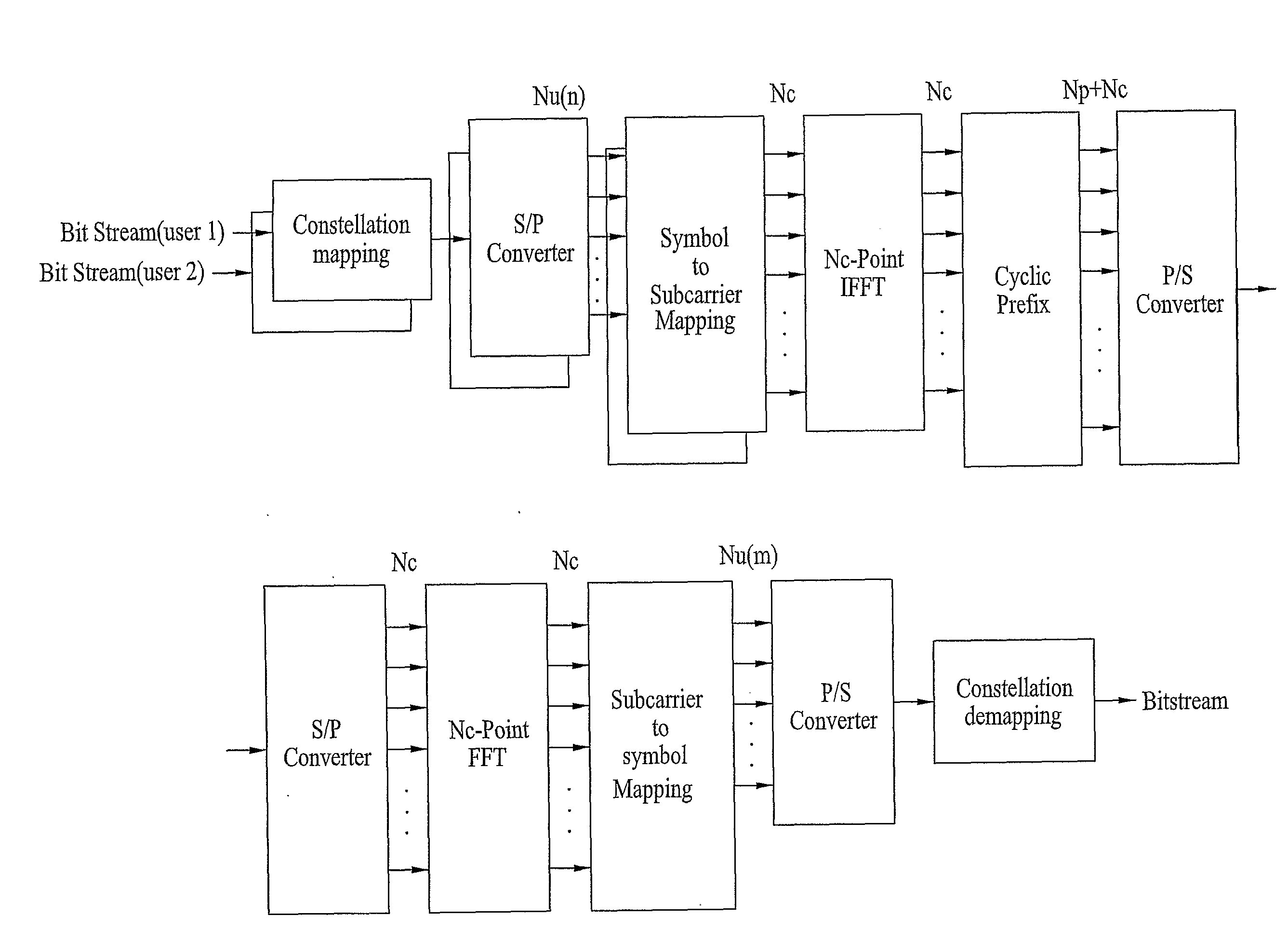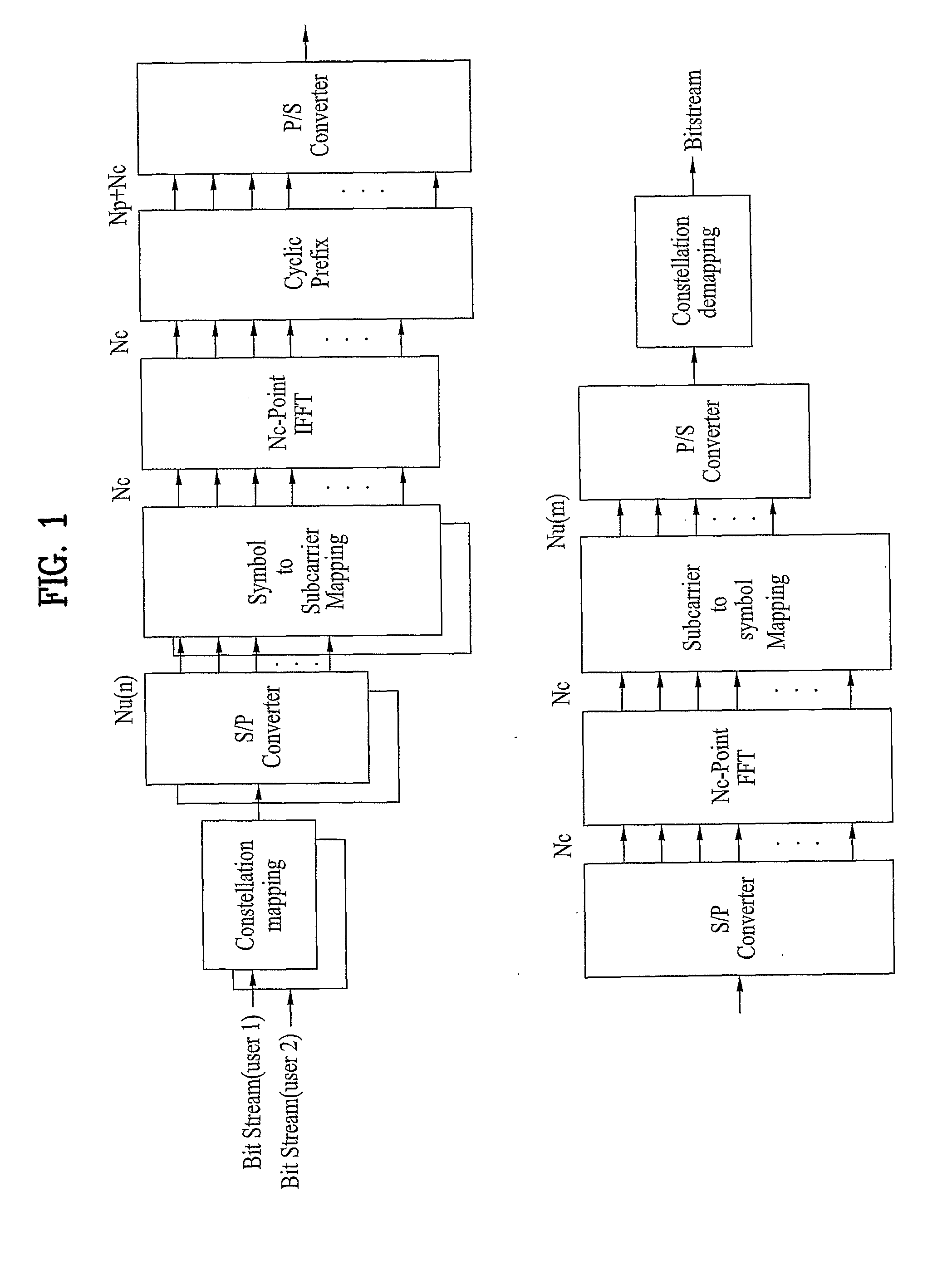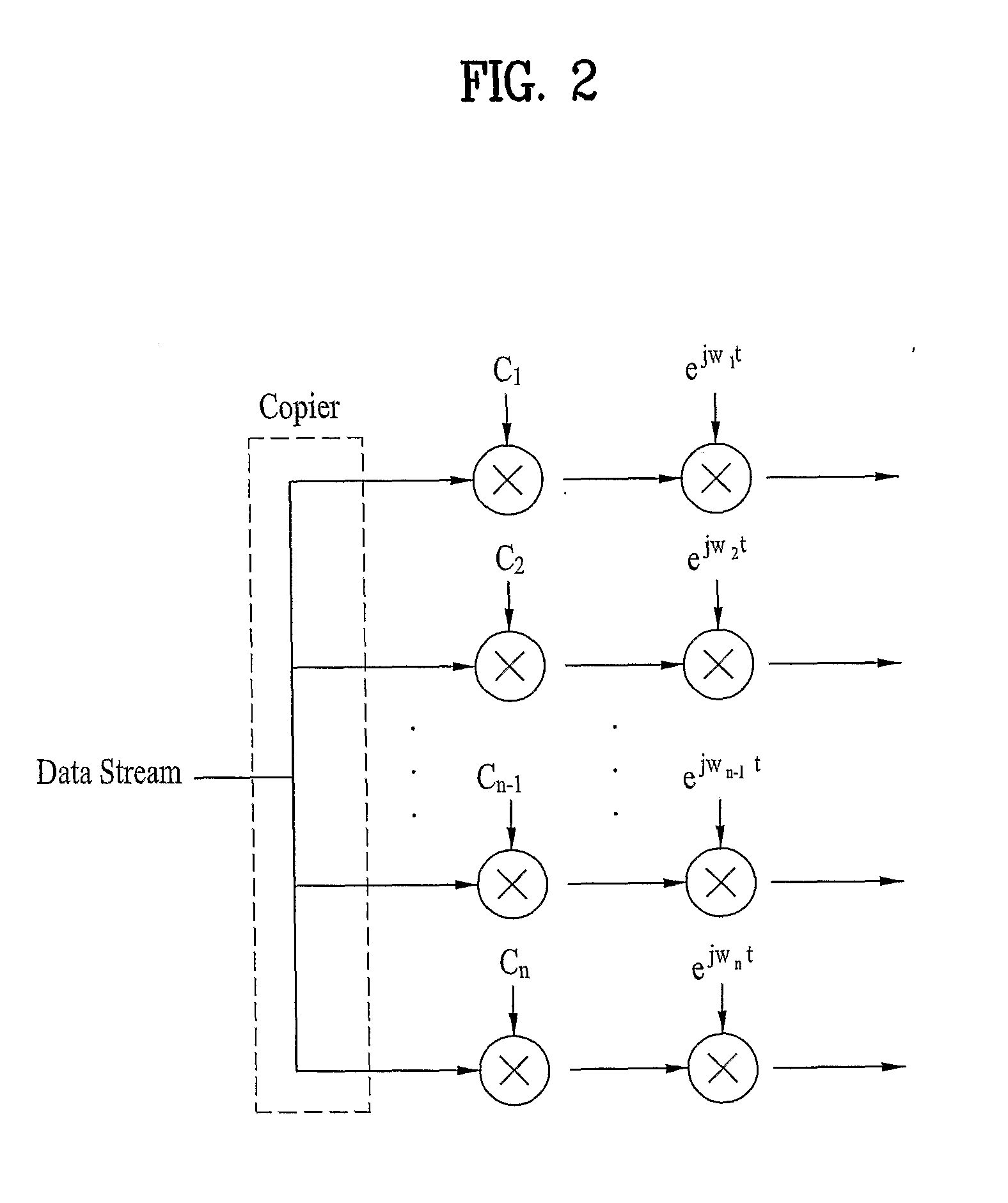Method for transmitting and receiving data in a multi-carrier system
a multi-carrier system and transmitting and receiving technology, applied in multi-frequency code systems, transmission path sub-channel allocation, transmission path division, etc., can solve problems such as capability degradation and inability to use the first frequency domain of its respective cells
- Summary
- Abstract
- Description
- Claims
- Application Information
AI Technical Summary
Benefits of technology
Problems solved by technology
Method used
Image
Examples
Embodiment Construction
[0036]Reference will now be made in detail to the preferred embodiments of the present invention, examples of which are illustrated in the accompanying drawings. Wherever possible, the same reference numbers will be used throughout the drawings to refer to the same or like parts.
[0037]FIG. 1 is a block diagram of a transmitting end using OFDMA. In the transmitting end, bit streams for a plurality of users are mapped by a constellation mapping module using various modulation schemes such as a Quadrature Phase Shift Keying (QPSK) or 16 Quadrature Amplitude Modulation (QAM). The bit streams are mapped to data symbols by the constellation mapping module, and the data symbols are converted to parallel data symbols by a S / P converter. Here, a number of the data symbols converted by the S / P converter equal a number of subcarriers (e.g., Nu(n)) allocated to each user (e.g., n). Since the number of subcarriers allocated to each user can be same or different, correspondingly, the number of da...
PUM
 Login to View More
Login to View More Abstract
Description
Claims
Application Information
 Login to View More
Login to View More - R&D
- Intellectual Property
- Life Sciences
- Materials
- Tech Scout
- Unparalleled Data Quality
- Higher Quality Content
- 60% Fewer Hallucinations
Browse by: Latest US Patents, China's latest patents, Technical Efficacy Thesaurus, Application Domain, Technology Topic, Popular Technical Reports.
© 2025 PatSnap. All rights reserved.Legal|Privacy policy|Modern Slavery Act Transparency Statement|Sitemap|About US| Contact US: help@patsnap.com



